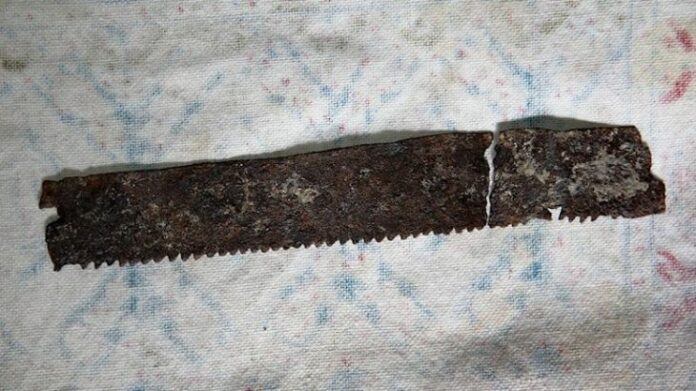In the heart of Anatolia, a remarkable discovery has emerged, offering fresh insights into ancient craftsmanship. While excavating in Çorum, the historical capital of the Ancient Hittite Empire in northern Turkey, archaeologists uncovered a saw that dates back 2,250 years. This artifact, hailed as the first of its kind, offers a unique perspective on the tools utilized during the late Bronze Age and the Galatian period.
Hattusha: A Historical Gem
Hattusha, the former capital of the Hittite Empire, is an archaeological site of great importance. Recognized as a UNESCO World Heritage Site since 1986, Hattusha was a pivotal center in the Near East during the late Bronze Age, roughly between 1600 and 1180 BCE. The city is celebrated for its advanced urban planning and well-preserved structures, including temples, royal residences, and defensive walls. Noteworthy features include the intricately adorned Lions’ Gate and Royal Gate. Additionally, Hattusha is famed for the rock carvings at Yazilikaya and its cuneiform writings, regarded as the earliest known form of Indo-European languages, earning it the designation of “Memory of the World” since 2001.

The Extraordinary Find
The recent excavation led by Professor Andreas Schachner from the German Archaeological Institute has added depth to Hattusha’s historical narrative. Among many artifacts unearthed, the discovery of a 2,250-year-old saw is particularly significant. This ancient tool, measuring about 20 centimeters long, was located on the northwestern slope of the ancient city’s large castle area. Interestingly, while the iron of the saw is thicker than modern counterparts, its design closely resembles contemporary saws.

Insights from the Excavation
In an interview with Anadolu Agency (AA), Professor Schachner emphasized the rarity and importance of this discovery. He explained that the saw hails from the 3rd century B.C., making it the first of its kind found in Anatolia. It was discovered within a structure dating back to the Galatian period, around 2,250 years ago. Such findings are uncommon; few examples exist from later Roman times, and none previously identified from the 3rd century B.C. in Anatolia.

“Based on the holes located on either side of the saw, we believe it had a semicircular handle,” noted Professor Schachner. “This suggests that carpenters of that era may have operated the saw by gripping it from the wood and moving it.” This observation provides an intriguing glimpse into the woodworking practices of ancient artisans.
Hattusha: An Open-Air Museum

Hattusha serves as an open-air museum, allowing visitors to immerse themselves in its rich historical and cultural legacy. The remnants of temples, royal palaces, and fortifications create a direct connection to the past. The elaborate carvings on the Lions’ Gate and Royal Gate, along with the rock art at Yazilikaya, showcase the artistic and architectural accomplishments of the Hittite Empire.
Conclusion
The unearthing of the 2,250-year-old saw in Hattusha stands as a testament to the sophisticated craftsmanship of ancient societies. This exceptional find not only enhances our understanding of the tools used during the late Bronze Age and Galatian period but also highlights Hattusha’s historical significance as a hub of cultural and technological advancement. As further excavations take place, Hattusha is poised to unveil even more secrets from its illustrious past, enriching our comprehension of human history’s intricate tapestry.

